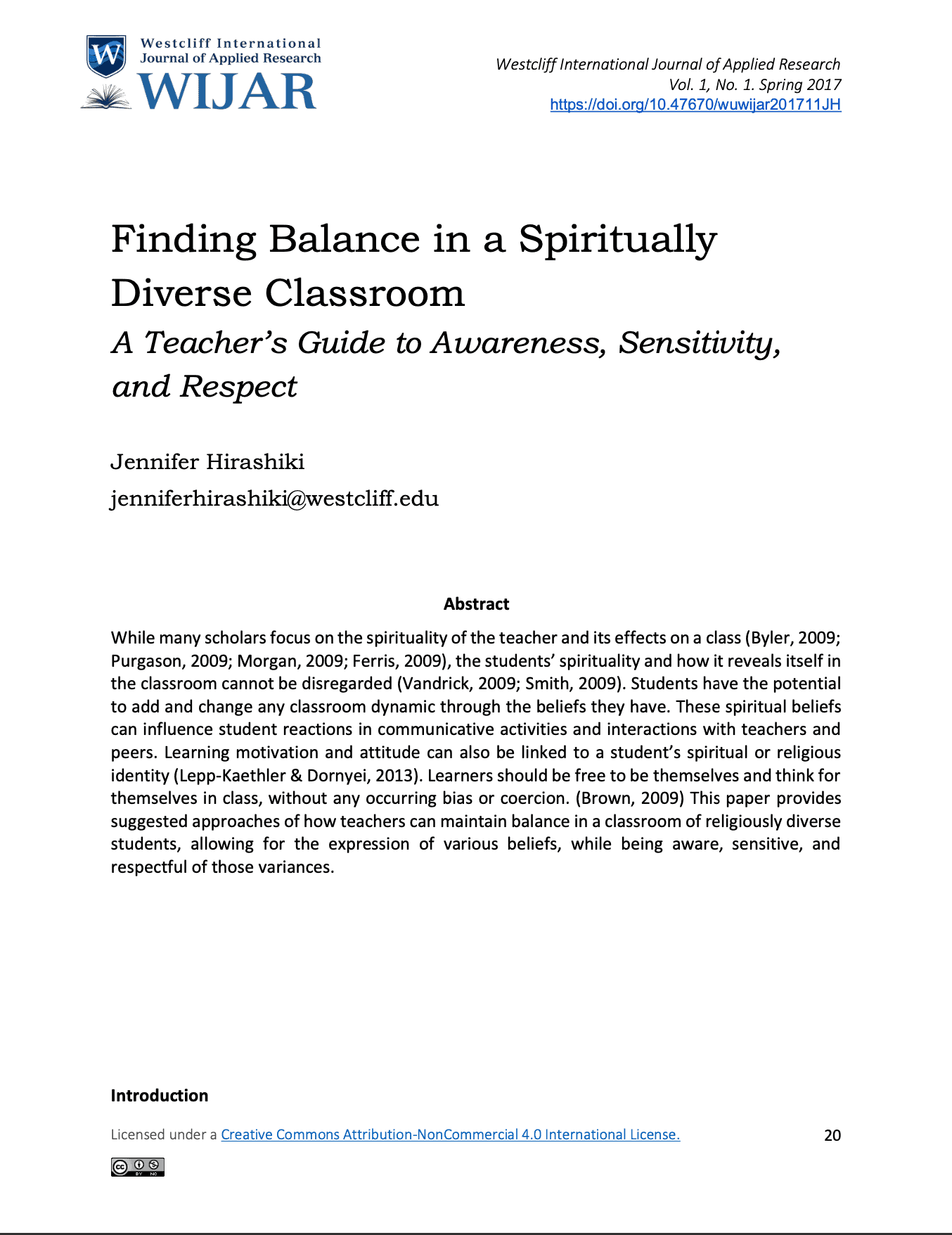Finding balance in a spiritually diverse classroom: A teacher’s guide to awareness, sensitivity, and respect.

Author: Jennifer Hirashiki
Issue: Spring Issue, 2017
Download ArticleAbstract
While many scholars focus on the spirituality of the teacher and its effects on a class (Byler, 2009; Purgason, 2009; Morgan, 2009; Ferris, 2009), the students’ spirituality and how it reveals itself in the classroom cannot be disregarded (Vandrick, 2009; Smith, 2009). Students have the potential to add and change any classroom dynamic through the beliefs they have. These spiritual beliefs can influence student reactions in communicative activities and interactions with teachers and peers. Learning motivation and attitude can also be linked to a student’s spiritual or religious identity (Lepp-Kaethler & Dornyei, 2013). Learners should be free to be themselves and think for themselves in class, without any occurring bias or coercion. (Brown, 2009) This paper provides suggested approaches of how teachers can maintain balance in a classroom of religiously diverse students, allowing for the expression of various beliefs, while being aware, sensitive, and respectful of those variances.
